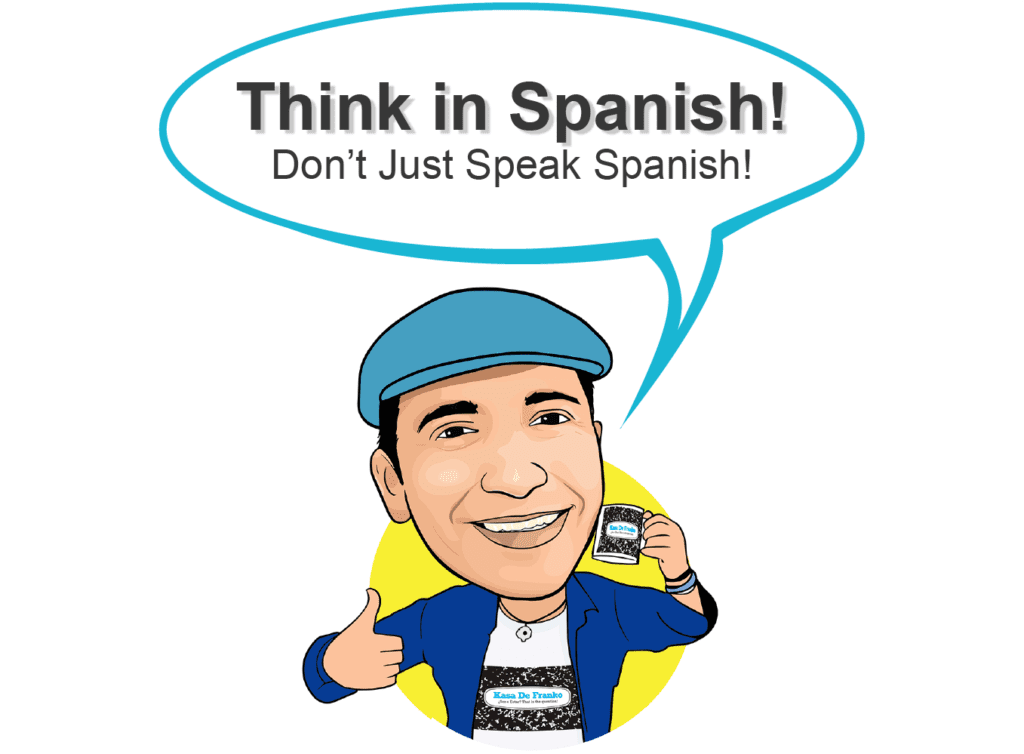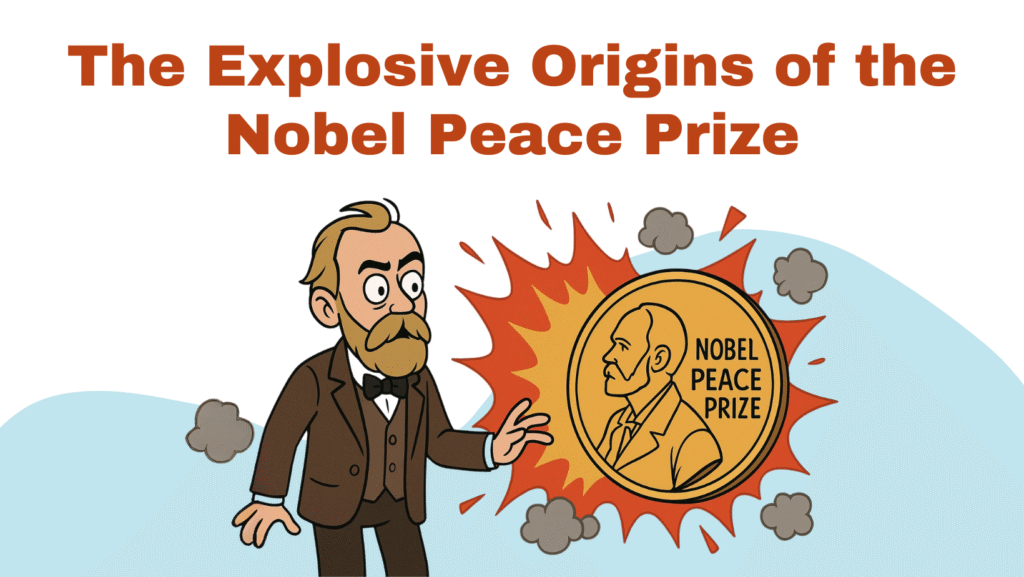
How to Build a Legacy from Blasting Powder
Or even better: How to Blow Up the World and Still Be Remembered as a Humanitarian. Let’s get one thing out of the way: the Nobel Peace Prize is not, I repeat not, the lovechild of flower crowns and United Nations conferences. It’s actually rooted in nitroglycerin, moral panic, and a very awkward obituary — and yes, it’s the perfect tale if you’re looking to learn Spanish with the Nobel Peace Prize’s explosive story.
Really? Yes! Because you can learn…
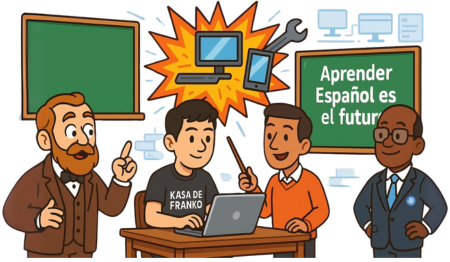
Spanish with the Nobel Prize’s Explosive Story
.…and stick around for Free Spanish Lessons at the end of this article!
Turns out, la paz comes with a side of la dinamita.
This isn’t just a wild ride through Nobel’s moral whiplash — it’s also your chance to pick up spicy Spanish like culpa histórica, voluntad, and obituario along the way.
Because if you’re gonna tell someone about a Swede who rewrote his legacy with explosions and a suspicious will… might as well do it en español
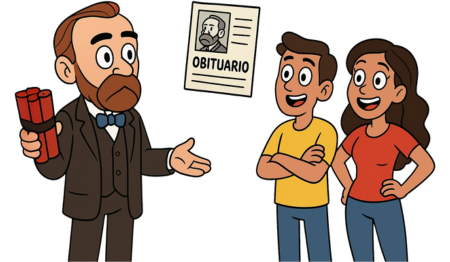
Peace, Funded by Boom
It’s not something invented in a candlelit yoga studio or dreamed up by a monk in the Himalayas. Nope. The Peace Prize — arguably the most prestigious symbol of international harmony — was funded by a man who made his fortune blowing stuff up.
Enter: Alfred Nobel, 19th-century chemist, industrialist, explosives magnate, and, perhaps most ironically, accidental peace icon.
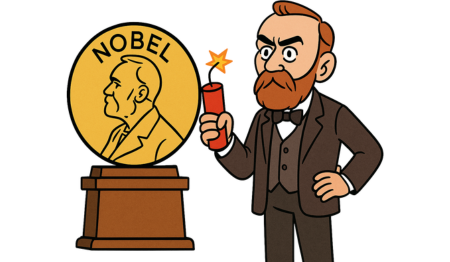
From Blasting Rocks to Blasting Reputations
Alfred Nobel was born in 1833 in Stockholm, Sweden, into a family that would go on to specialize in… things that explode. His father, Immanuel Nobel, was an engineer and inventor who dabbled in weapons and demolition. Let’s just say Alfred didn’t exactly grow up with bedtime stories about nonviolence and dandelions.
Alfred followed in his father’s footsteps, but added a layer of genius (and a pinch of moral ambiguity). After studying chemistry in Paris and working in the U.S. with the likes of John Ericsson, he returned to Europe to perfect the use of nitroglycerin — a volatile compound that was more unpredictable than a toddler on espresso.
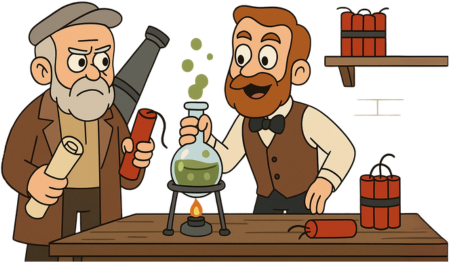
And Boom: Dynamite Was Born!
Eventually, Alfred figured out how to stabilize the stuff by combining it with a porous material, creating a substance he called dynamite. He patented it in 1867 and became very rich. Like, ‘factories in 20 countries’ rich. Like ‘I just sold bombs to six governments before breakfast’ rich.
He didn’t stop there. He also invented the blasting cap, gelignite, ballistite, and more — all tools that revolutionized construction, mining… and warfare.
So yes, the man was a genius. A deeply conflicted genius who made the world more efficient and more explosive at the same time.
And if this all sounds like the perfect setup for a historical novela… well, it kind of is. Learn Spanish with the Nobel Peace Prize’s explosive story, and you’ll never confuse dinamita with drama again.
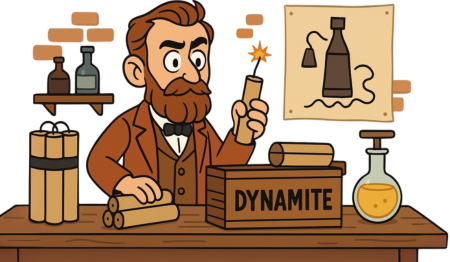
The French Obituary That Blew His Mind
Now here’s where things get spicy. In 1888, Alfred’s brother Ludvig Nobel died while visiting Cannes. But the French press, never ones to let facts get in the way of a good headline, accidentally thought it was Alfred who had died. And so they published what might be the pettiest obituary in journalistic history.
“Le marchand de la mort est mort”
“The merchant of death is dead.”
The article continued:
“Dr. Alfred Nobel, who became rich by finding ways to kill more people faster than ever before, died yesterday.”
Imagine sipping your morning espresso and reading about your own moral bankruptcy in black and white. Nobel was horrified. This wasn’t the legacy he wanted. He didn’t want to be remembered as the Steve Jobs of carnage.So he did what any billionaire with a conscience (and a flair for posthumous drama) would do: he rewrote his legacy.
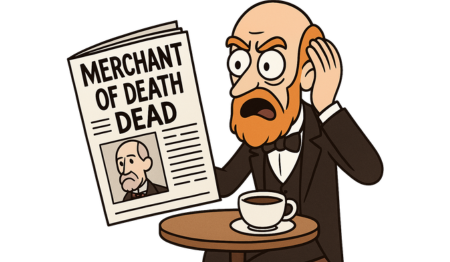
Peace by Will
Nobel didn’t just donate to a good cause or adopt a rescue dog. He rewrote his will. Quietly, dramatically, and without telling most of his family.
In it, he declared that the bulk of his massive fortune — some 31 million Swedish kronor at the time (equivalent to over $250 million today) — would go toward establishing a series of prizes. These would honor those who “have conferred the greatest benefit to mankind.”
And tucked into that will was this little gem:
“…one part to the person who shall have done the most or the best work for fraternity between nations, for the abolition or reduction of standing armies and for the holding and promotion of peace congresses.”
Translation: Make peace sexy again.
That’s how the Nobel Peace Prize was born. Out of guilt, image rehab, and one hell of a legacy plot twist.
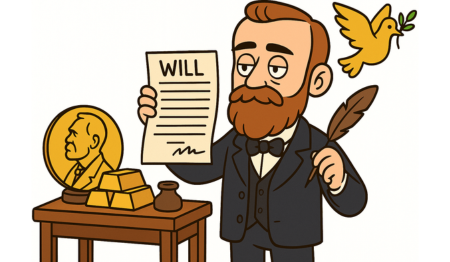
Wait, Why Norway?
Side note: You might be wondering why the Peace Prize is awarded by Norway, while the others are handled in Sweden.
Good question. No one knows for sure. Nobel never explained it. Some think it’s because Norway was part of a union with Sweden at the time. Others suggest it was to balance power. Personally, we like to think he flipped a coin or just liked fjords.
Whatever the reason, the Norwegian Nobel Committee has been handling the Peace Prize ever since. They’re a small group, chosen by the Norwegian parliament, who basically spend the year figuring out who’s slightly less chaotic than everyone else.
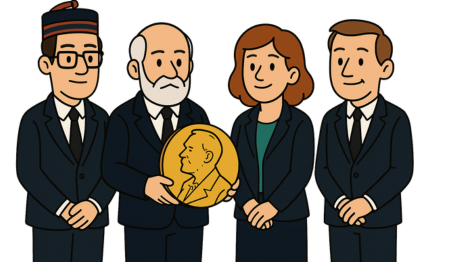
Peace, But Make It Messy
Now, here’s where things get extra ironic. The Peace Prize has had its fair share of… shall we say, controversial winners.
Let’s take a tour:
- Henry Kissinger (1973): Won for negotiating a ceasefire in Vietnam — a ceasefire that fell apart almost immediately. Even the ceremony was protested. One member of the Nobel Committee resigned in protest.
- Yasser Arafat, Shimon Peres, and Yitzhak Rabin (1994): Awarded for efforts in the Oslo Accords, which were supposed to solve the Israeli-Palestinian conflict. We’re still waiting.
- Barack Obama (2009): Got the prize barely nine months into his presidency. Even he looked confused.
The point? The prize often goes to people in the middle of a conflict, not the end of it. It’s less of a victory lap and more of a very expensive “please stop” sticker.
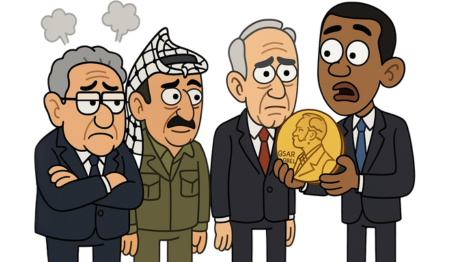
Nobel’s Image: From Boom to Benevolence
Despite all this, Alfred Nobel managed to pull off one of the greatest image makeovers in history. Today, he’s remembered not as the man who gave us high-powered explosives, but as the benevolent architect of intellectual and humanitarian glory.
Statues, school names, and even celestial bodies bear his name. The Nobel brand carries prestige, gravitas, and an annual dose of awkward tuxedos and standing ovations. All because one man read an unflattering obituary and decided, “Yeah… maybe I don’t want that on my Wikipedia page.”
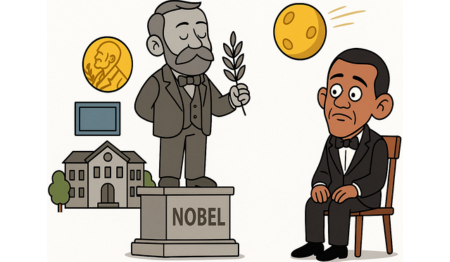
What Can We Learn from This Glorious Mess?
- Legacies are weird. You can invent dynamite, sell it to multiple governments, and still be remembered as a champion of peace if you time your will right.
- Image is everything. In a world where billionaires launch rockets for fun, Nobel went the other way: he launched a peace prize to make up for rockets.
- History is complicated. The Peace Prize, like peace itself, is messy, unpredictable, and sometimes handed out too early. But it’s better than nothing.
- Guilt is powerful. Especially when backed by a few million dollars and an existential crisis.
— A Satirical Interlude. Picture this: a fictional NATO marketing meeting in Brussels.
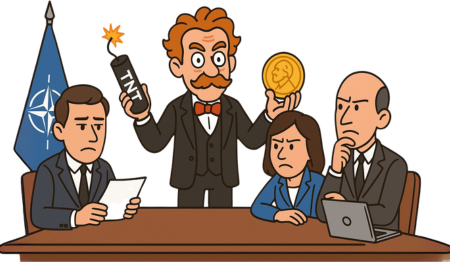
Final Boom
The Nobel Peace Prize isn’t a spotless icon. It’s a paradox wrapped in prestige, irony, and well-meaning contradictions. And that’s what makes it so fascinating.
So next time you see someone in Oslo accepting a gold medal for not starting a war, remember: it all began with an obituary, a fortune, and a man who decided he didn’t want to be remembered as the guy who made the world explode a little faster.
He wanted to be remembered as the guy who tried — maybe a little too late — to help it heal.
And honestly? That’s kind of beautiful.
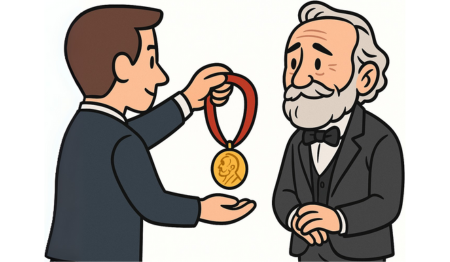
Dynamite Diplomacy: Nobel’s Business of War
Before Nobel’s peace prize dreams came true, his day job was arming the world. Dynamite wasn’t just a friend to railroads and mining crews — it was also a game-changer for militaries who wanted bigger bangs for their buck.
Nobel sold his inventions to governments across Europe. Blasting caps, nitroglycerin factories, new forms of propellants — the man had a catalog that would make any 19th-century general drool.
Let’s be real: peace wasn’t exactly part of the business plan. Until that French obituary called him out.
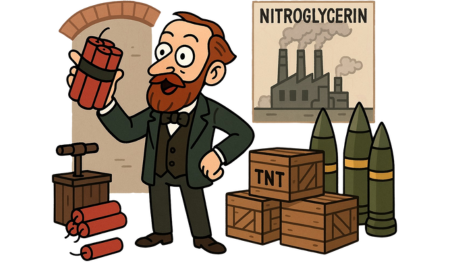
Nobel’s Posthumous PR Kit
How to turn from “merchant of death” to peace icon in 3 easy steps:
- Step 1: Invent terrifyingly effective explosives.
- Step 2: Read your own obituary. Panic.
- Step 3: Leave a suspiciously generous will and don’t tell your family.
Boom. Instant legacy glow-up.
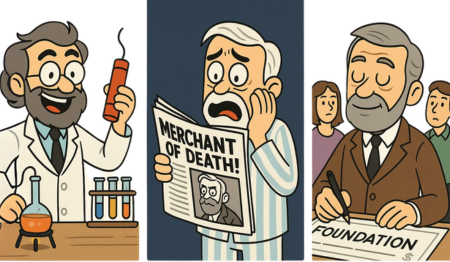
More Peace Prize Plot Twists
Here are a few more head-scratchers:
- Aung San Suu Kyi (1991): Once a symbol of democratic resistance. Later, accused of ignoring crimes against the Rohingya. Not a good look.
- Abiy Ahmed (2019): Ethiopia’s Prime Minister received the prize for peace with Eritrea — then launched a brutal internal conflict.
- The European Union (2012): For keeping peace in Europe. (Just… don’t tell Greece.)
Turns out, giving a prize for peace is risky when humans are involved.
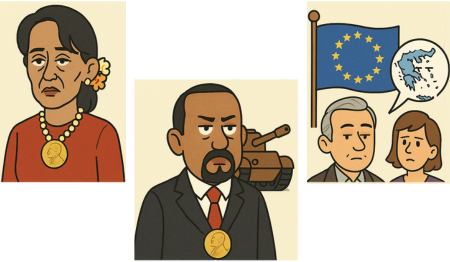
Imagine This Today…
Remember the Cold War? Spy thrillers, nuclear standoffs, “We will bury you!” energy. But at least there If this happened now? The internet would melt.
Imagine if Elon Musk created a “Global Prize for Climate Responsibility.”
Or Jeff Bezos sponsored the “Worker Empowerment Award.”
Or Mark Zuckerberg offered a prize for “Privacy and Human Connection.”
That’s how weird this looked in the 1890s. And yet… it worked.
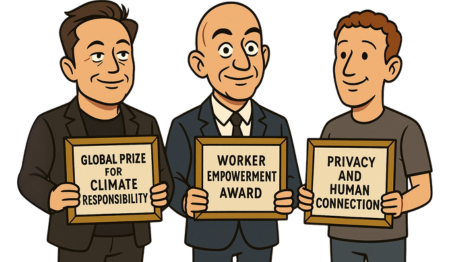
A Line from the Man Himself
Alfred once wrote:
“My factories may well put an end to war sooner than your peace congresses.”
Was that optimism? Sarcasm? Both? Either way, it sounds a lot like the idea of mutually assured destruction — peace, not through love, but through fear.
And that, friends, is the chaotic brilliance of Alfred Nobel.
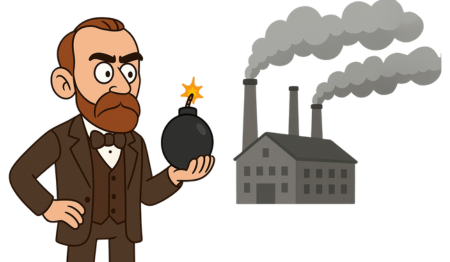
Legacy Makeovers Welcome
Got your own Nobel-level plot twist?
Maybe your great-aunt invented asbestos cookware and now you want to start a wellness retreat. Or your startup accidentally caused a blackout in three countries and you’re thinking… tree planting?
Either way, stick around till the end to truly get the story — and learn Spanish with the Nobel Peace Prize’s explosive legacy. Who knows? It might just inspire your own multilingual rebrand.

🎯 Missed the Memo?
Ready for our most chaotic take yet? Learn Spanish to Avoid World War III
Want to know why Trump almost got a Nobel (and why the internet wept)? Read here.
Curious about Israel, Iran, and why war might just be a bad idea? Yeah, that’s here too.
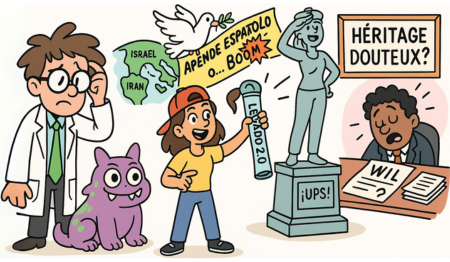
Spanish Vocab (The Dynamite Edition)
Because if you’re going to talk about legacies, explosions, and existential crises — you might as well do it en español.
| Español | Inglés | KDF Contextual Snark |
|---|---|---|
| dinamita | dynamite | The boom that built a legacy. Or wrecked it. |
| legado | legacy | What you leave behind when your PR team is death. |
| culpa | guilt | Stronger than TNT. Fueled the Nobel Peace Prize. |
| obituario | obituary | Preferably not your own. |
| reputación | reputation | Nobel’s needed a remix. Badly. |
| premio | prize | Peace-themed, irony-infused, occasionally awkward. |
| redención | redemption | Step 3 in the “Merchant of Death Glow-Up Plan.” |
| hipocresía | hypocrisy | When your war business funds peace medals. |
| voluntad | will (as in testament) | The document that rewrote history. Quietly. |
| congreso de paz | peace congress | Nobel thought they were cute. Also, ineffective. |
✍️ Bonus French déjà-vu (in case you missed it up top):
“Le marchand de la mort est mort” – The merchant of death is dead.
The headline that launched a thousand philanthropic regrets.
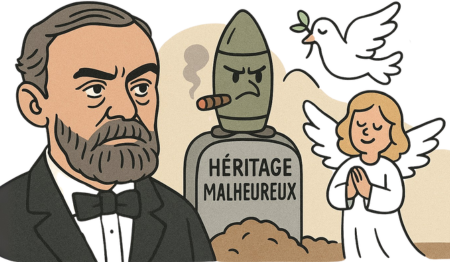
When Love Wins Over War… and Words Start the Real Trouble
Still wondering how a guy who made dynamite became the poster boy for peace? Welcome to the world of delicious contradictions — where blowing things up leads to gold medals, and where history reminds us that intentions matter, but wording matters more.
Especially in Spanish.
So if Nobel could rewrite his legacy with one explosive decision, maybe you can rewrite your Spanish fate — with fewer embarrassing mistranslations and more seductive diplomacy.
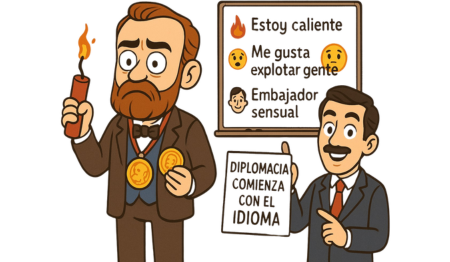
From Explosions to Embraces — In Spanish
Maybe we don’t need more peace prizes.
Maybe we just need more besos.
Our Sexy Spanish Phrase series is for anyone who’s over war talk and into whispering quiero paz — with a wink.
Learn how to flirt across borders, kiss in context, and maybe convince someone to drop their weapons — and their clothes.
👉 Flirt in Spanish — because ven a mi cama might just be the most effective peace treaty.
And hey — if all this talk of seduction and ceasefires has you curious, you can still learn Spanish with the Nobel Peace Prize’s explosive story event— where even la paz gets a little steamy.

Laughing Through the Legacy
Alfred Nobel’s obituary was lost in translation — but your Spanish doesn’t have to be.
Visit our Language Bloopers section for all the diplomatic disasters and hilarious Spanish fails we’ve collected (and committed) over the years.👉 Read the bloopers
Because world peace is hard. Spanish is harder. And sometimes, Nobel-level irony starts with a single wrong word.
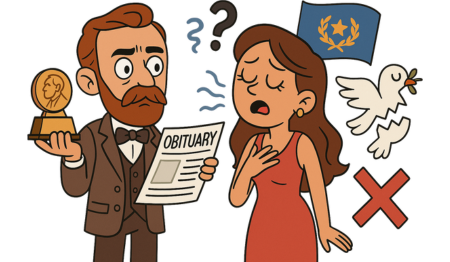
Because at Kasa de Franko…
We don’t just teach language. We decode history’s messiest moments, give side-eye to global icons, and sprinkle irony like it’s hot sauce.
Peace prizes. War stories. Obituaries that change the world.
🧠 Come for the facts.
🔥 Stay for the contradictions.More historical ironies, uncomfortable truths, and legacy shakeups — only at Kasa de Franko and KiDeeF Spanish. Because we like our history loud, ironic, and just a little explosive.
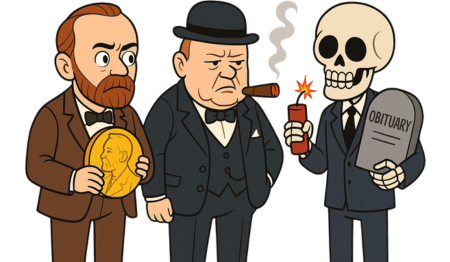
Want to Explode Your Spanish?
You’ve made it this far — through nitroglycerin, moral whiplash, and a legacy rescue mission. So here’s a thought: Are you actually ready to start learning…

Spanish: A Nobel Peace Prize’s Explosive Story?
At Kasa de Franko, we don’t do boring grammar drills.
We use Nobel drama, political irony, and legacy makeovers to make Spanish stick — and yes, we’ve got a whole class on how to say “peace prize scandal” like a pro.
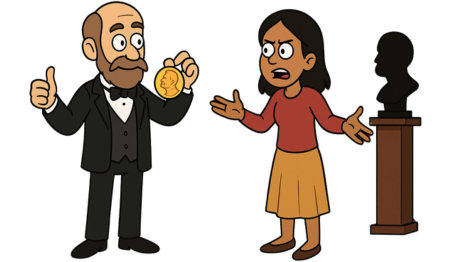
🎙️ Now that you know the story in English,
go beyond — and dive into it in Spanish.
Join our next free KDF meetup, where we unpack Nobel’s explosive legacy, questionable peace icons, and the Spanish vocab you never thought you’d need for talking about moral redemption and dynamite.
👉 Join the meetup and Learn Spanish with the Nobel Peace Prize’s Explosive Story — the KDF way.
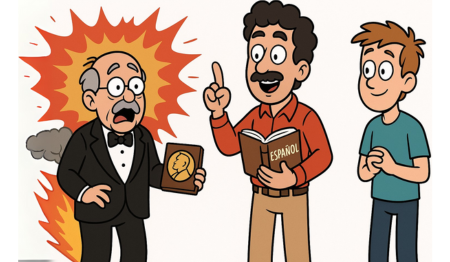
🎁 Free Spanish Lessons, Anyone?
No catch. No dynamite required. Just real stories, real humans, and Spanish that actually matters.
👉 Try a free class and start learning Spanish the KDF way.
Because knowing how to say culpa histórica just might save the world.
